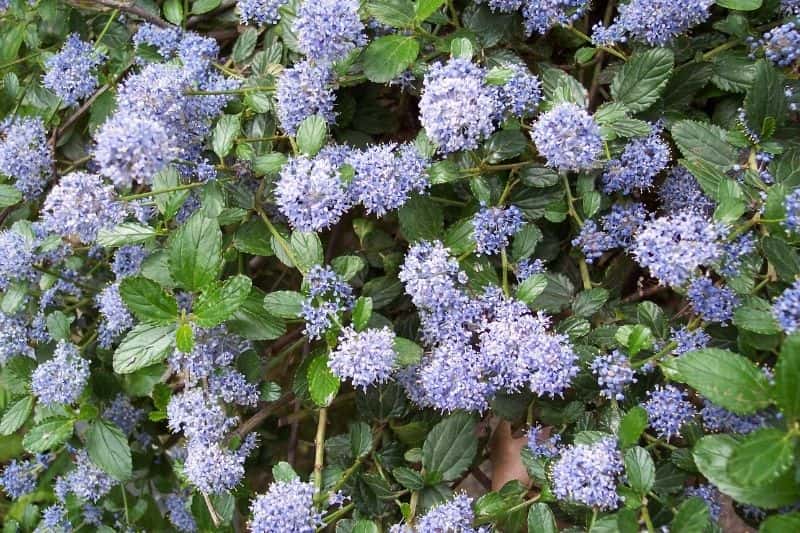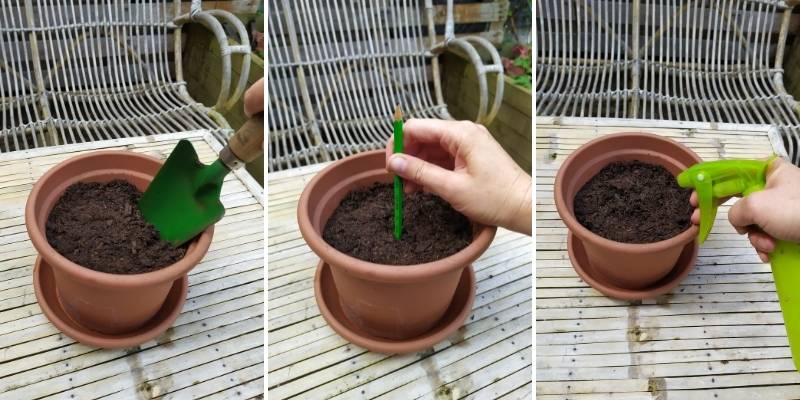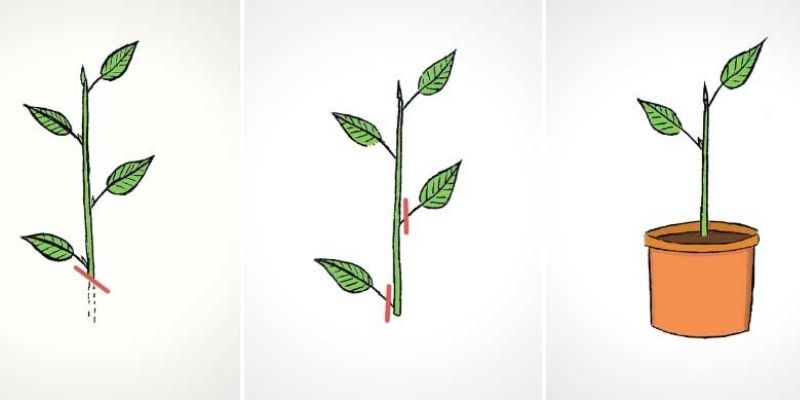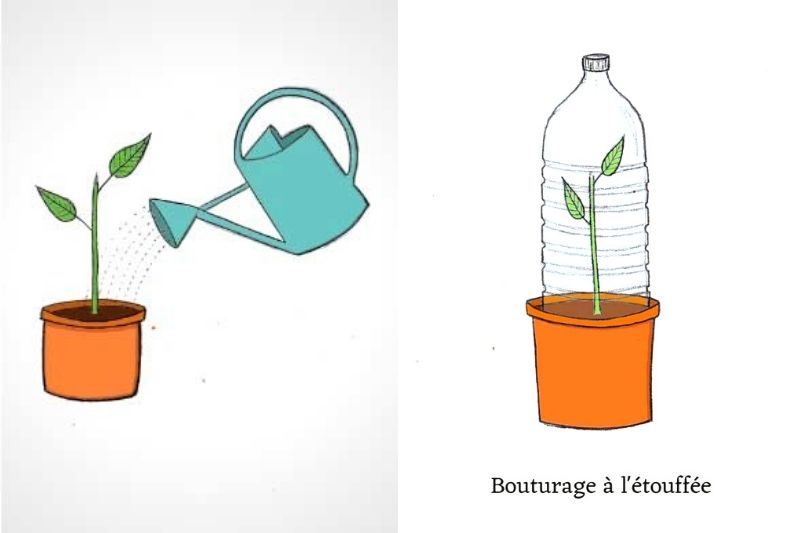Ceanothus are beautiful ornamental bushes offering abundant spring or summer flowering, both melliferous and fragrant. Its nickname "California lilac" comes from its spike-shaped blue, pink or white flowers that recall those of lilac. This ornamental bush comes in various shapes and habits depending on variety. For example, it can range from 40 cm in height for Ceanothus prostratus up to 4 m for Ceanothus arboreus 'Trewithen Blue'. Undemanding, it is easy to grow in any well-drained soil. These flowering bushes are used equally well in borders, as specimens, as groundcover, in containers and are stunning in a hedge. So why not multiply this beauty in the garden? In addition, creating cuttings will allow you to obtain young plants easily.
Discover when and how to take a cutting of Ceanothus with our illustrated tutorial.

Ceanothus thyrsiflorus 'repens'
When to take cuttings of Ceanothus?
Best period for taking Ceanothus cuttings depends on foliage. Deciduous varieties should be taken in June from herbaceous shoots. Evergreen cultivars should be taken in August by taking semi-lignified stems. In both cases, method used is the same: cutting under cover.
Note: Hardwood cuttings are also possible in October for deciduous Ceanothus.
Required equipment
For successful California lilac cuttings you will need:
- one or several pots or large bucket
- a mister
- a pencil
- clay pebbles
- a pruning shear cleaned with alcohol before use to avoid spreading disease
- a cloche or a plastic bottle or plastic bag or a mini-greenhouse to cover cuttings
- seed and potting compost or a mix of 2/3 turf and 1/3 garden sand
- facultative : a root activator
How to take Ceanothus cuttings under cover?
1- Place a layer of clay pebbles at bottom of pot to improve drainage.
2- Then fill with seed and potting compost up to 2 cm from rim, then firm lightly by hand.
3- Using mister, wet compost. Substrate must be moist without being waterlogged. Preferably use rainwater.
4- Make a 4–5 cm deep hole with pencil.

Make a 4–5 cm deep hole and moisten compost
4- Inspect bush to select healthy stems, preferably without flowers. For deciduous varieties choose a green flexible stem. For evergreen Ceanothus select a semi-lignified stem, meaning soft wood is beginning to become lignified.
5- With a pruning shear, cut 5 or 6 stems measuring 10–20 cm. Recut just below a node, i.e. below a leaf. Future roots will emerge from this same node. Remove any flowers.
6- Remove lower leaves from cutting and keep half of upper leaves. This prevents exhaustion of cuttings due to excessive transpiration.
7- Facultative: you can gently tap base of cuttings into a plant hormone for cuttings to encourage root development.
8- Plant stem in pot.

Cut cutting below a node, remove lower leaves and plant
9- Firm compost gently around cutting.
10- Place a cloche over stem to saturate atmosphere around cuttings with moisture (hence term "under cover"). If no cloche available, use a plastic bottle with bottom removed or a transparent bag held by stakes. Warning: stem and leaves must not touch side of cloche to avoid mould forming!

11- Keep compost cool, slightly moist but not waterlogged. Remove cloche for half an hour every 3–4 days to allow air renewal.
12- Place pot in bright spot, out of direct sunlight.
13- After 2–3 months, roots of cutting will have developed sufficiently. You can remove cloche and repot your young plants into a larger pot.
14- Protect young shoots during winter by keeping them in a bright unheated room or in a cold greenhouse. Greatly reduce watering, especially in case of frosts.
Following spring you can plant your small bush directly into ground. It will prefer a light, well-drained soil, not too chalky, in partial shade or in sun. Undemanding, you can simply add a handful of well-rotted compost at foot of bush when planting.
Water during heatwaves and severe drought for first two years after planting. Once established, Ceanothus will tolerate occasional drought.
Further reading :
- Discover all our varieties of Ceanothus.
- For full care guide on Ceanothus, see our advice on California lilac: planting, maintenance and pruning.
- See our advice sheet: “Propagation by cuttings: everything you need to know about different techniques and our advice”.
































Comments